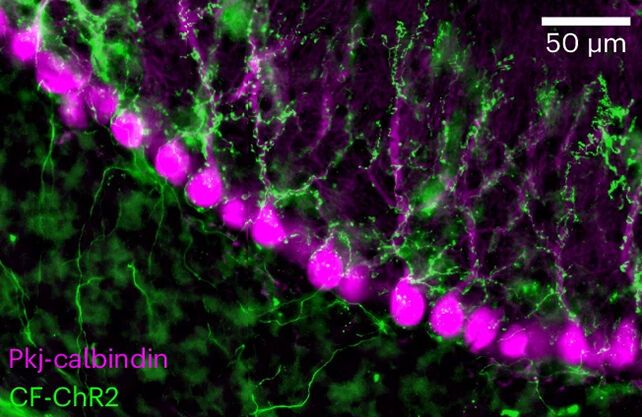News
Scientists accidentally "zombified" mice: how it happened and what the experiment revealed
Scientists accidentally discovered "zombie neurons" in the brains of mice. No, these are not monsters that eat meat and spread viruses, but cells that stop interacting normally, even if they are functionally alive.
The study sheds new light on the processes occurring in the brain. The details were reported by Science Alert.
A team of scientists from Portugal discovered these cells as part of a study of cerebellar activity. The cerebellum performs many important functions, in particular, it processes sensory information related to motor movements. In practice, this helps us walk down a crowded street or pick up a drink without spilling it.
By using optogenetics, the researchers were able to show the key role of certain inputs to the cerebellum called climbing fibers.
"After we continuously stimulated the climbing fibers while presenting a visual cue, the mice learned to blink in response to this cue – even in the absence of stimulation," said neuroscientist Tatiana Silva of the Champalimaud Center for the Unknown.
It has long been thought that climbing fibers were somehow involved in learning, and this is yet another piece of evidence that may clear up the confusion and controversy surrounding their role. Other types of brain cells that were manipulated in the same way did not have the same effect on the mice's learning ability.
Then the researchers noticed the zombie neuron effect. The introduction of the light-sensitive protein Channelrhodopsin-2 (ChR2) as part of optogenetic manipulations led to the zombification of fiber cells.
The cells were alive in the sense that they were still active and functioning like normal neurons, but no messages were transmitted through them. They had somehow disconnected from other neural circuits, preventing the mice from learning.
Neuroscientist Megan Carey explained that the introduction of ChR2 into the fibers changed their natural properties, preventing them from responding properly to standard sensory stimuli. This, in turn, completely blocked the animals' ability to learn.
Given the similarities between the mouse and human brain, the scientists hypothesized that the same processes are likely to occur in humans.
"Our next steps include understanding why ChR2 expression leads to neuronal 'zombification' and determining whether our findings apply to other forms of cerebellar learning," the scientists said.
Subscribe to OBOZ.UA channels on Telegram and Viber to keep up with the latest events.




























